A good combination
The ChessBase Magazine offers a wealth of articles that explain the ideas behind openings, analyse novelties and recommend lines for your repertoire. These articles are extremely popular — they help amateurs and professionals to build up and to sharpen their opening repertoire. Another tool that helps to sharpen and widen one's repertoire is Let's Check — a tool that many players use to analyse opening lines in considerable detail and depth.
1) ChessBase Magazine and Let’s Check
So, why not combine these two and study the opening articles in the ChessBase Magazine with Let's Check?
Recently, ChessBase Magazine 188 was published (read a review!). After installing the magazine on your hard drive the directory of the issue offers an overview of the articles in that issue:

Click or tap to expand any image
The title usually contains a short note about the line that is treated in the article (marked in blue in the picture above).
To illustrate how to study an opening article in the ChessBase magazine with the help of Let's Check, let's have a look at an article that shows how to counter the sharp lines of the Ponziani efficiently. This article is particularly interesting if you counter 1.e4 with 1...e5 or if you plan to surprise a "Ponziani devotee" or if you are a Ponziani fan yourself.
2) Opening the article
An opening article in the ChessBase magazine usually consists of an introductory text and a number of illustrative games:

A text appears that guides you through the lines and illustrative games. To get an overview it helps to read this text before starting to work more closely on the games and lines.
In the text the main line is marked as bold. Games to which the article refers and that are in the database are linked and marked in blue. Clicking a game opens a board window with the relevant position.


3) Analysing the games with an engine and Let’s Check
It is standard to check opening variations and recommendations from books, articles or DVDs with an engine. This usually leads to a "chess discussion" with one or several engines. Of course, it helps if you have a powerful hardware/software combination but you can also try Let’s Check!
What is Let's Check?
Let's Check is a huge database that includes all analyses which users have made online. These analyses are often very deep because they were made on powerful computers — which now helps users with less powerful machinery. Let's Check follows the principle of "give and take". When I use Let’s Check the calculations of my engine are sent to the database. However, for the "give and take" principle it does not matter which engine I use and how powerful my computer is.
The local engine and Let’s Check
After the moves 1.e4 e5 2.Nf3 Nc6 3.c3 Nf6 4.d4 exd4 5.d5 Bc5 the following position appears on the board — and the engine starts working.
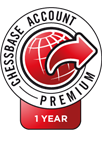 At the airport, in the hotel or at home on your couch: with the new ChessBase you always have access to the whole ChessBase world: the new ChessBase video library, tactics server, opening training App, the live database with eight million games, Let’s Check and web access to playchess.com
At the airport, in the hotel or at home on your couch: with the new ChessBase you always have access to the whole ChessBase world: the new ChessBase video library, tactics server, opening training App, the live database with eight million games, Let’s Check and web access to playchess.comIf your computer is online Let’s Check starts when you start your local engine.
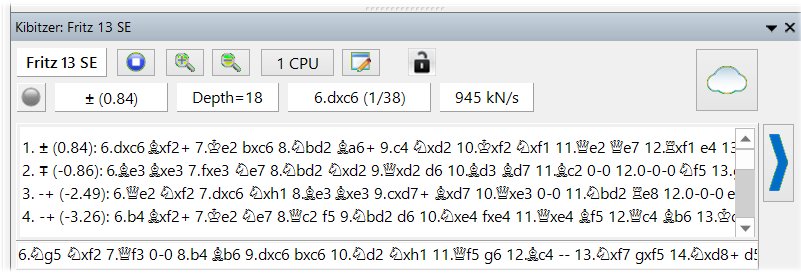
If Let’s Check does not start automatically you can activate it by clicking on the blue arrow next to the variation window. The settings can be adjusted under, well, the "Settings" button in the line above Let's Check.

After the start of the Let’s Check analysis a window opens next to the window of the local engine. The new window contains similar information:

After calculating for a few seconds the local engine (in our example Fritz 13) indicates that the position is better for White. The engine calculated with one CPU and the evaluation is based on a line that was calculated to a depth of 13 ply.
The Let's Check window
When you are connected to the Let's Check database the window on the right shows the information from the database. Whether you are connected or not is indicated in the Let’s Check bar:

A green light indicates a connection to the Let's Check database. By clicking "Disconnect" you end the Let's Check analysis. The analyses of your engine are no longer send to the database and you no longer get analyses from other engines. Under "Settings" you can choose whether your user name is shown. But if you want to remain anonymous you can analyse without revealing your user name.
The Let’s Check variation
A Let’s Check variation is never longer than three half-moves. After the Let’s Check variation follows the evaluation which, however, is based on the depth with which the engine analyses. To the right of the depth the name of the engine and the name of the user is given (if the user allowed it). After that follows the date on which the line was analysed. The number on the right of the date shows how often the analysis of the line has already been confirmed by other engines and users. "Confirmed" means that the variation has been analysed in the same depth without any serious deviations in the evaluations. The more confirmations the variation has the more reliable is the evaluation.
The number in brackets indicates the points which the user gets for his analyses in the Let’s Check list of top users. However, here, in this tutorial we will not focus on this rather playful side of Let’s Check.
The number of visitors is shown below the variations. It indicates how often users analysed this position with their engine while they were connected to Let's Check.
4) Working with Let’s Check — an example
Let’s Check gives you access to engine analyses of other users and thus saves a lot of time – not least because variations that have been checked by a lot of users are usually trustworthy.
Let's have a look at an example and let's check the line GM Rainer Knaak recommends against the Ponziani Opening. As local engine we use Fritz 13 which is part of ChessBase 15.
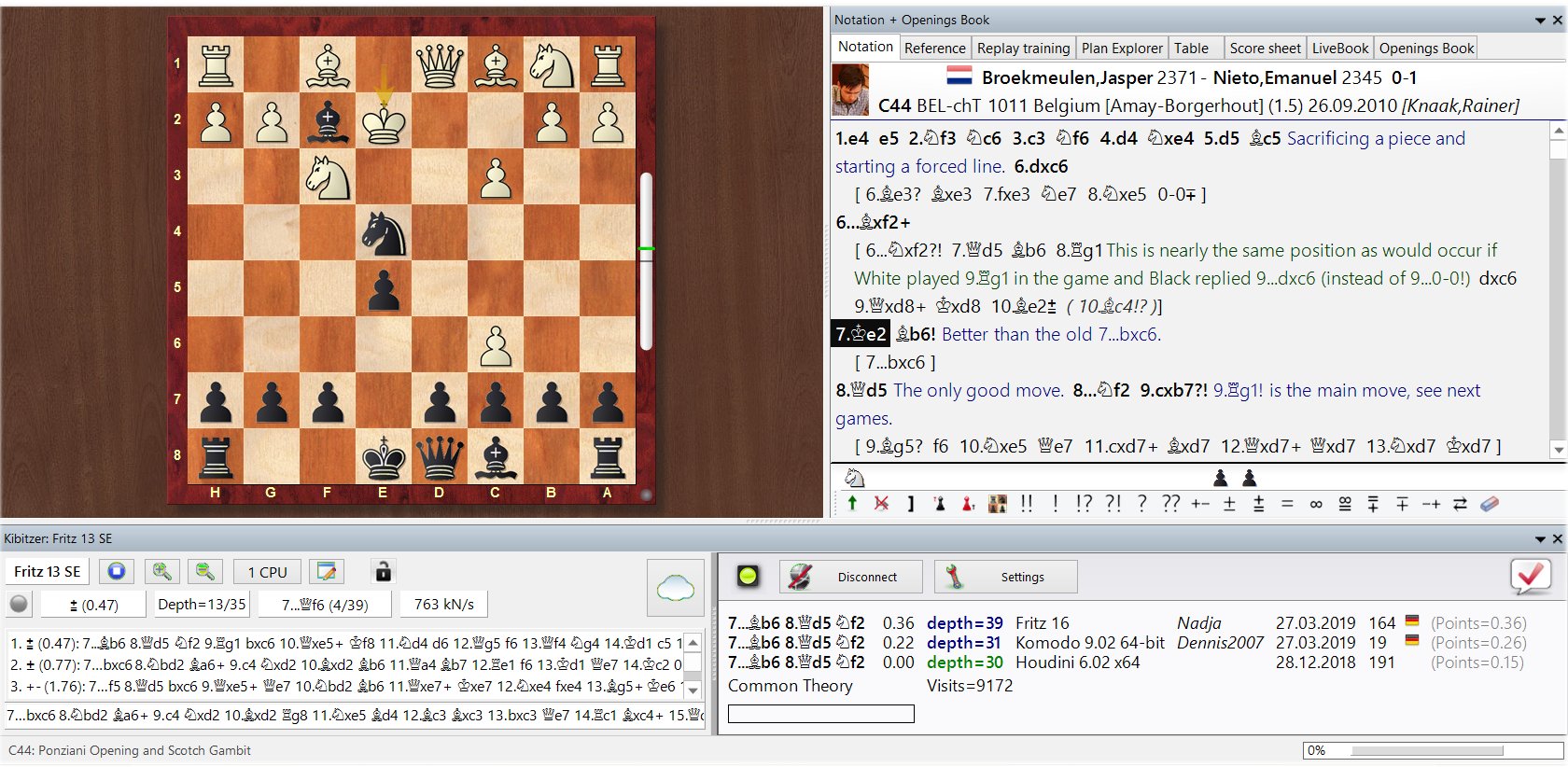
Click or tap to expand any image
After three to four seconds Let’s Check comes up with a reliable result — the lines are analysed in more depth and the Let's Check engines are stronger than our local engine. Thus, if you want to follow the "normal" lines with Black you can focus on 7...Bb6 without looking at other lines. However, if you curious and if you want to play the line with White, 7....bxc6 is also interesting. Checking this with Let’s Check leads to the following result:
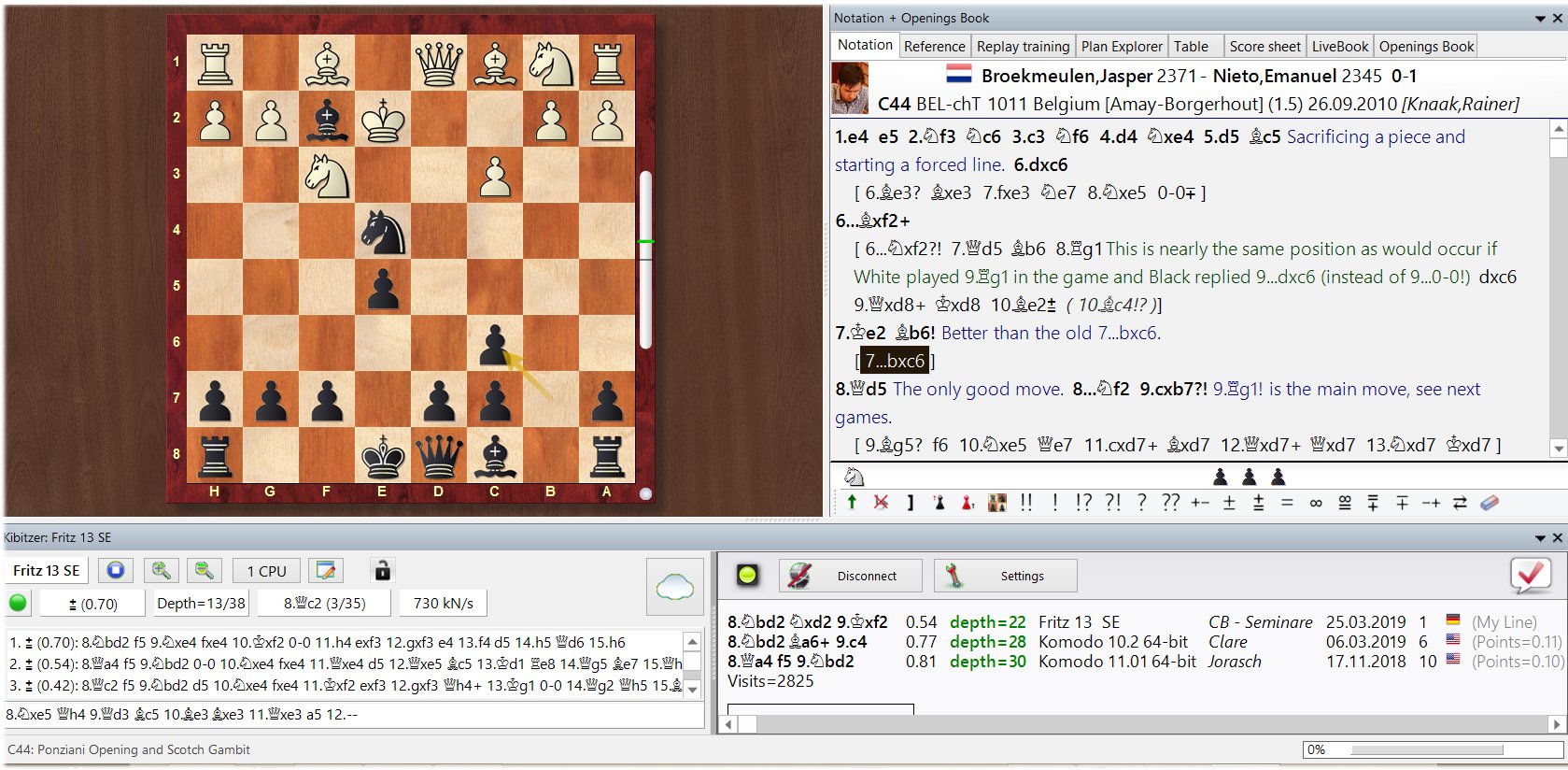
The number of visits went down significantly — from 9172 to 2825. The analyses are 30 half-moves deep but are often not confirmed. But we still move on safe ground. So, let's follow the best (from White's perspective) Let’s Check variation, that is 8.Qa4 f5 9.Nbd2 0-0 10.Nxe4 dxe4 11.Qxe4 d5 12.Qxe5 Bxf5 14.Kf2.
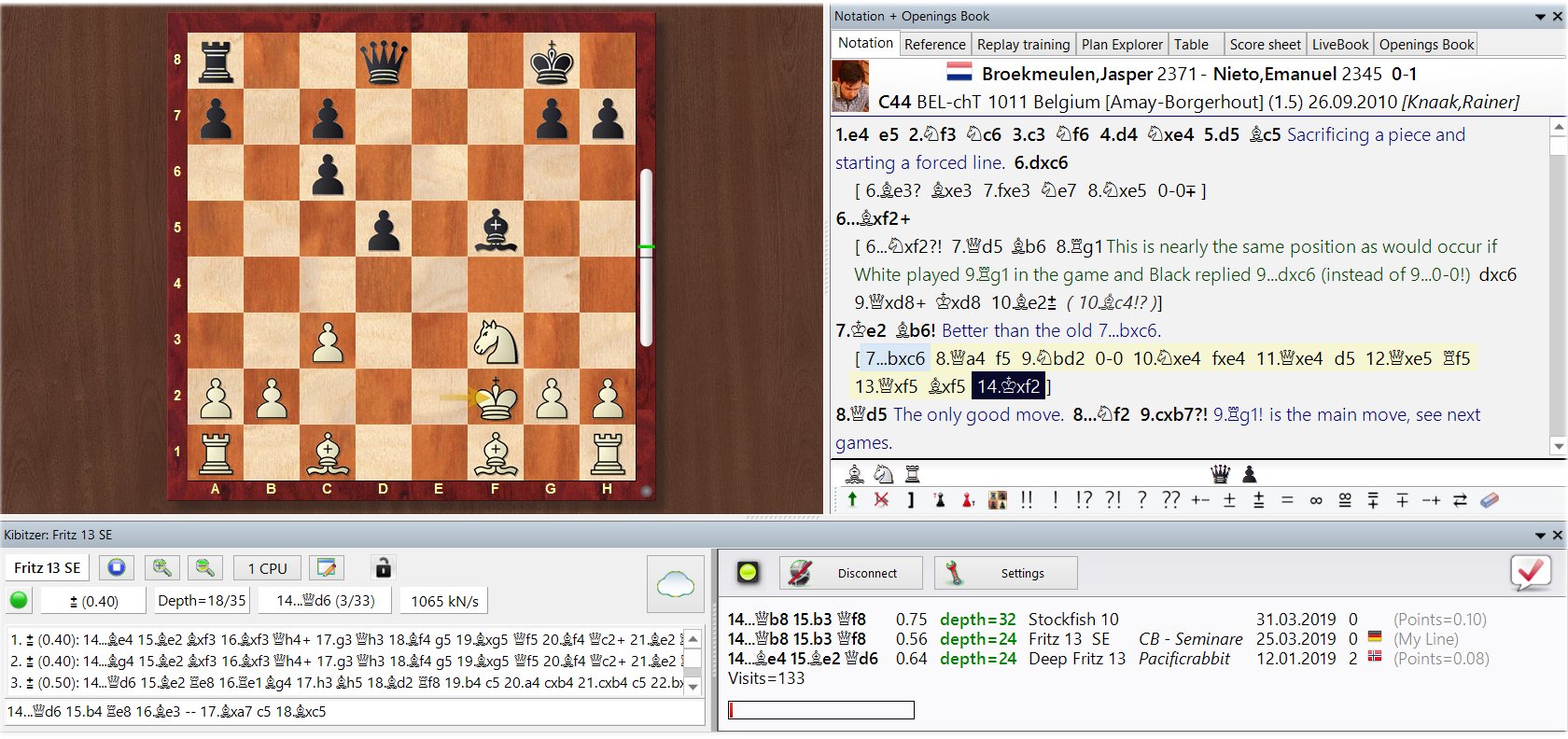
The number of visitors went down (to only 129). The soundness of the line has not been confirmed often, however, the evaluation is not that different from the evaluation of the position we started with. This indicates that the evaluation is correct: this variation is good for White!
The following diagram takes us back to the main line and the Let's Check engines recommend sacrificing another piece with 10...0-0 though our local engine Fritz 13 shies away from giving more material:

However, 4507 visits and the variations have been confirmed more than 42 times. This looks reliable and we can continue to analyse the piece sacrifice without having to worry too much. But the territory becomes less familiar the further we go, no matter whether we look at mainlines or sidelines. Step by step we leave the terrain that has been explored and "mapped" by Let's Check and we more and more have to rely on ourselves (chess understanding + engine).
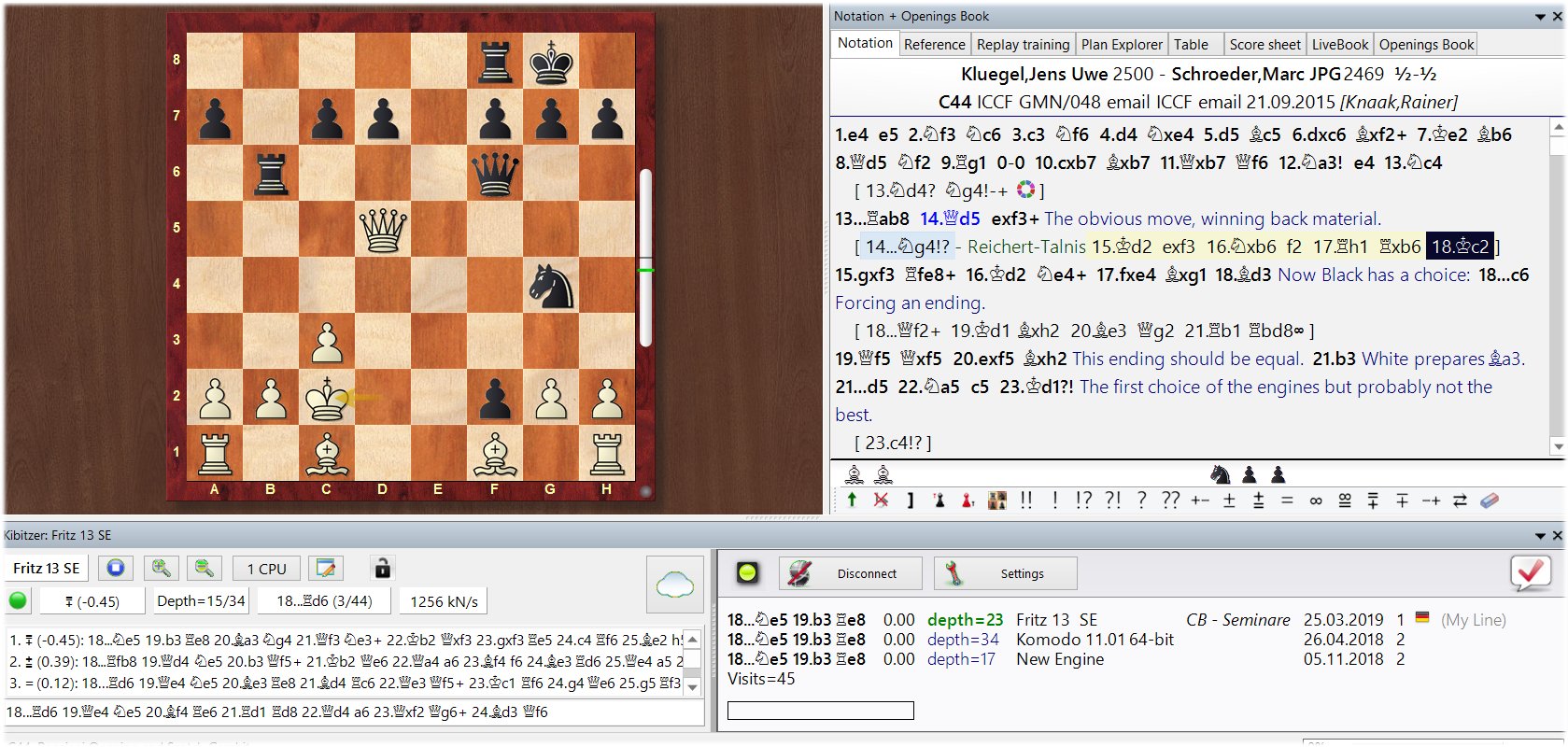
The bar below the number of visits shows the time the own engine needs to replace the Let's Check variation at the top.
Summary:
- With Let’s Check, a ChessBase analysis function, you do have access to engine analyses other users have already made (a kind of collective intelligence);
- Let's Check thus gives you access to previous analyses and established knowledge – you do not have to re-invent the wheel;
- You save time which you might want to use to explore lesser known variations;
- Use Let’s Check and analyse online — start your local engine and connect to Let’s Check.
The next tutorial will show how to integrate an opening article from the ChessBase magazine to your opening repertoire.
Should you have questions about the material presented here, feel free to use the "feedback to the editors" link below and I will try to answer all questions related to ChessBase 15 in a forthcoming tutorial.
Links


































